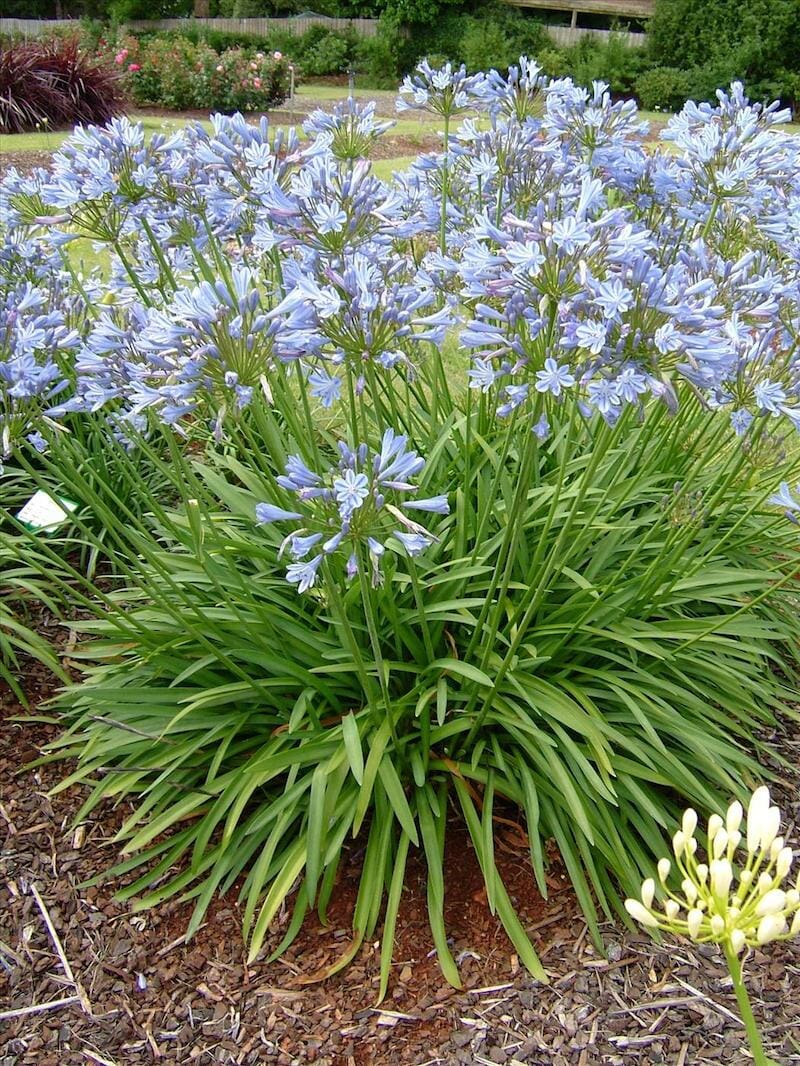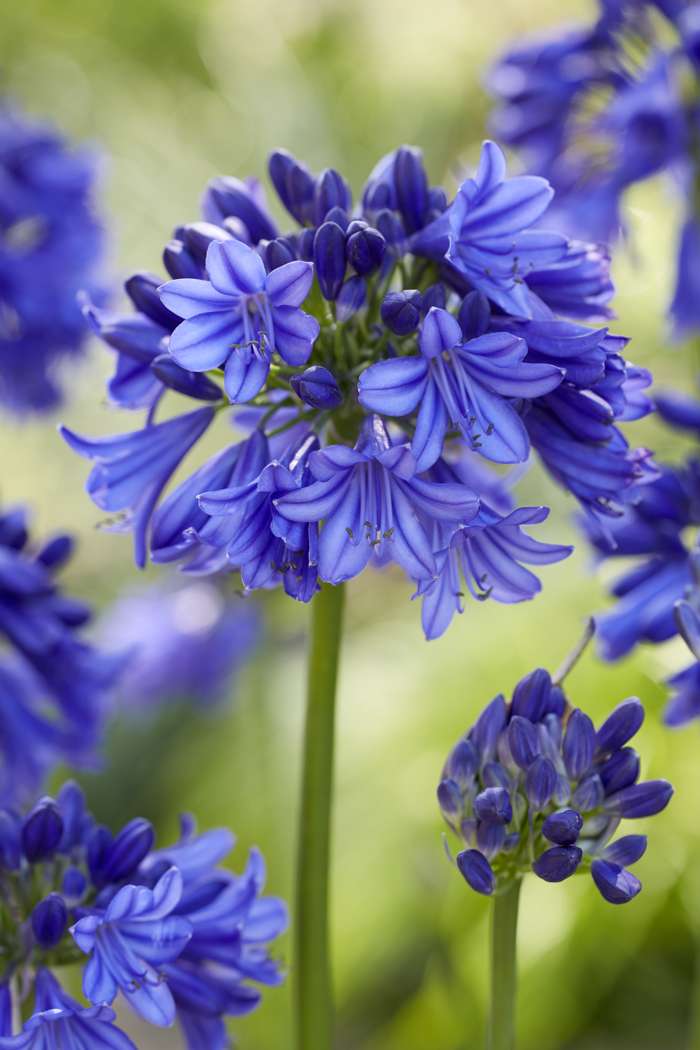Agapanthus Care Tips for Lush and Vibrant Flowers
Agapanthus Care Tips for Lush and Vibrant Flowers
Blog Article
Letting Loose the Secret to Successful Agapanthus Growing: Idea for a Flourishing Garden
In the world of gardening, cultivating agapanthus efficiently requires a calculated strategy that incorporates numerous elements of plant care. By understanding the subtleties of agapanthus farming, one can develop an atmosphere where these plants prosper and grow generously.
Growing Agapanthus: Finest Practices
When growing Agapanthus, appropriate dirt preparation is important for guaranteeing effective growth and growth of these lovely flowers. Agapanthus, typically called Lily of the Nile or African lily, flourishes in well-draining dirt with a slightly acidic to neutral pH level - Agapanthus. Before planting, it is critical to amend heavy clay soils with organic matter such as garden compost or peat moss to enhance drain and offer crucial nutrients for the plants
To grow Agapanthus, pick an area that gets complete sunshine to partial color, as this will promote healthy and balanced growth and abundant blooming. Dig a hole two times the diameter of the plant's origin ball and place the Agapanthus at the exact same deepness it was previously expanding. Gently backfill the opening with soil, weighing down securely to remove any air pockets around the roots.
Water the newly grown Agapanthus extensively and remain to maintain the soil equally wet, particularly during the plant's energetic growing period. Agapanthus. Using a balanced fertilizer once a month can even more sustain the plant's growth and blooming. By adhering to these finest practices for planting Agapanthus, you can create a stunning display of these exciting blossoms in your garden
Perfect Dirt Conditions for Agapanthus
For optimal growth and growing success of Agapanthus plants, guaranteeing the dirt problems are ideal is crucial. Agapanthus chooses dirt that is rich in nutrients, so including a well balanced fertilizer during the growing season can promote healthy growth and vivid flowers.

Watering and Feeding Tips
To make sure healthy development and vivid flowers, proper watering and fertilizing techniques are essential for effective Agapanthus farming. Agapanthus plants benefit from routine watering, especially during the expanding period.
When it pertains to fertilizing Agapanthus, a balanced fertilizer with equivalent components nitrogen, phosphorus, and potassium can be applied in the springtime to promote healthy development and blooming. Slow-release fertilizers are perfect for giving nutrients gradually over a prolonged duration. Avoid over-fertilizing, as this can result in too much vegetation growth at the cost of blossoms.
In addition, integrating raw material like compost right into the soil can enhance nutrient levels and boost dirt structure, aiding in the overall wellness of the Agapanthus plants. By adhering to these watering and fertilizing tips, garden enthusiasts can ensure their Agapanthus plants grow and generate spectacular display screens of flowers.
Trimming and Deadheading Techniques
Correct pruning and deadheading methods play an important role in keeping the wellness and aesthetic appeals of Agapanthus plants, matching the i was reading this essential techniques of watering and feeding for effective growing. Pruning Agapanthus entails removing invested blossom heads, yellowing or dead fallen leaves, and overall shaping of the plant to promote far better development. Deadheading, the procedure of eliminating faded blossoms, not just boosts the plant's appearance but also motivates further blooming.
When deadheading Agapanthus, it is suggested to clip off the blossom stem at the base using sharp, clean shears. This procedure reroutes the plant's power from seed manufacturing back right into origin and vegetation growth, promoting a healthier and a lot more robust plant. Regular deadheading can expand the growing duration of Agapanthus and stop self-seeding, which can lead to overcrowding.
In terms of pruning, Agapanthus usually take advantage of a light trim after blooming to clean the plant and urge fresh development. Reducing the invested flower stems and eliminating any kind of dead or broken foliage aids keep the plant's vitality and total look. Nevertheless, it is important to avoid cutting into the crown of the plant, as this click this link can deteriorate its health.

Protecting Agapanthus From Pests and Diseases
Executing effective insect and illness monitoring strategies is critical to securing the health and vitality of Agapanthus plants in cultivation. Agapanthus are typically durable plants, but they can still succumb to different pests and illness if not effectively cared for. One typical pest that influences Agapanthus is the Agapanthus borer, a caterpillar that passages into the plant, creating damages to the fallen leaves and flowers. To protect against problems, routine assessment of the plants is vital. If borers are found, they can be by hand gotten rid of, or insecticidal soap can be used as a control step.
In enhancement to pests, Agapanthus are at risk to illness such as root rot and fungal leaf areas. By remaining cautious and addressing parasite and illness concerns immediately, gardeners can help their Agapanthus thrive and grow.

Conclusion
Finally, successful growing of agapanthus requires correct growing methods, suitable soil conditions, adequate watering and fertilizing, routine trimming and deadheading, and defense from diseases and pests. By following these tips and methods, gardeners can make certain a prospering garden full of beautiful agapanthus flowers. Agapanthus. Bear in mind to maintain consistent treatment and focus to detail to promote the health and wellness and long life page of these sensational plants
When planting Agapanthus, appropriate soil preparation is vital for guaranteeing effective development and advancement of these gorgeous blossoms.Water the freshly planted Agapanthus thoroughly and continue to keep the dirt evenly moist, particularly during the plant's active expanding period.For optimum growth and blooming success of Agapanthus plants, guaranteeing the dirt conditions are excellent is important. When hair transplanting or growing Agapanthus, make certain the soil is well-prepared to give the necessary foundation for the plants to develop themselves effectively. One typical pest that influences Agapanthus is the Agapanthus borer, a caterpillar that tunnels right into the plant, creating damages to the flowers and fallen leaves.
Report this page